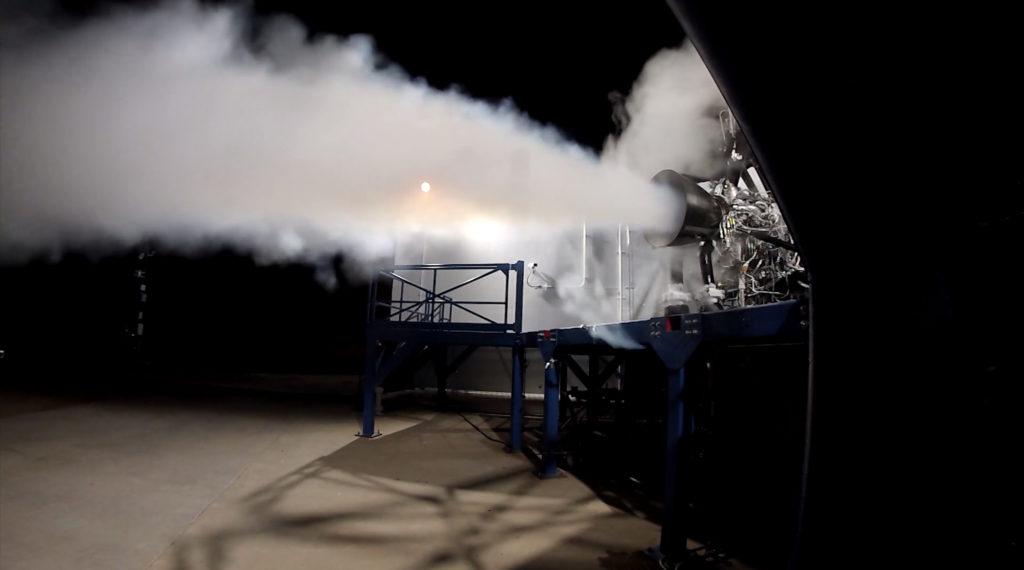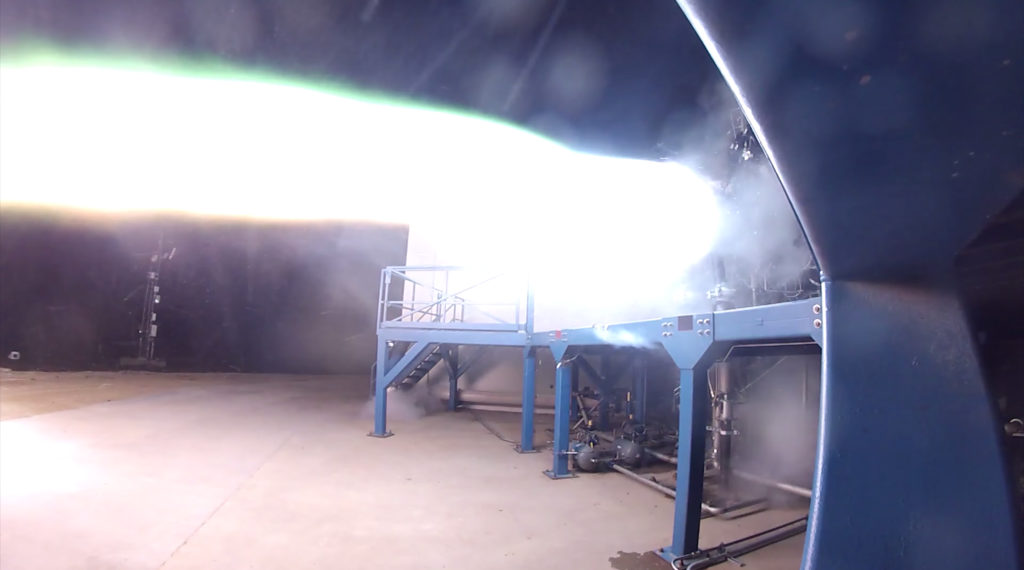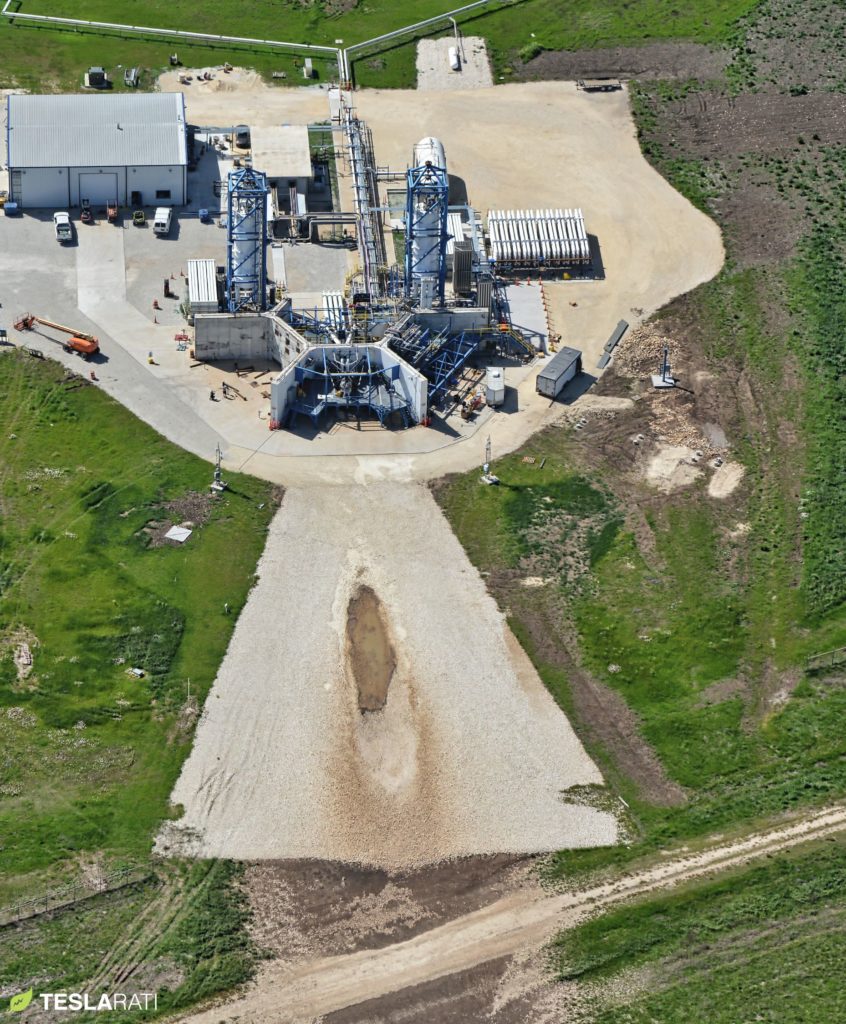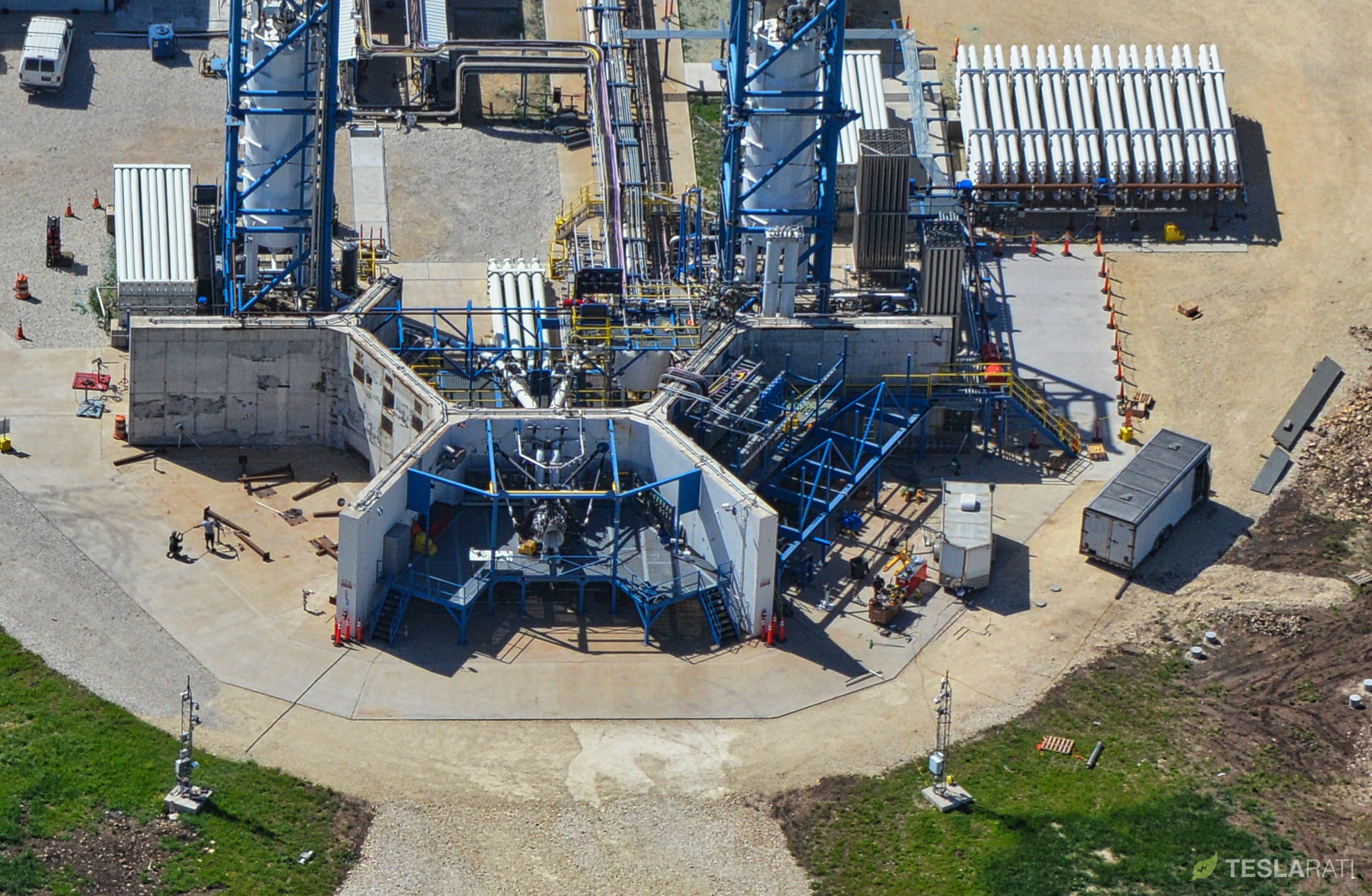
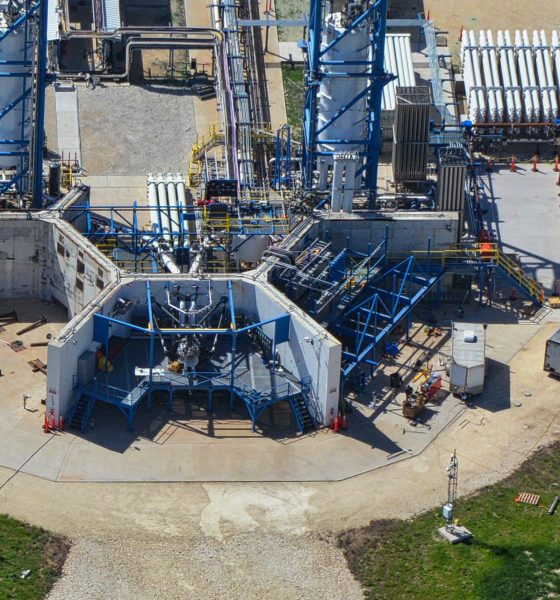
News
SpaceX to use superalloys in Mars rocket Raptor engines, says Elon Musk
A few days after he touched upon methods of creating BFR propellant on Mars, SpaceX CEO Elon Musk mentioned in a tweet that the launch company was using cutting-edge combinations of metals (known as superalloys) to ensure the efficiency and reliability of its Raptor rocket engine, a critical requirement for BFR to enable sustainable colonization of Mars.
In response to a tweeted question about types of metal alloys currently in use at SpaceX, Musk briefly delved into the complexities of building BFR’s propulsion system, particularly with respect to alloys capable of surviving the intense conditions inside a rocket engine:
“[SpaceX is using] SX 300 & soon SX 500. Kind of a modern version of Inconel superalloys. High strength at temperature, extreme oxidation resistance. Needed for ~800 atmosphere, hot, oxygen-rich turbopump on Raptor rocket engine.” – Elon Musk
There’s a lot to break down for the layperson in Musk’s tweet. First and foremost, commenters (your author included) immediately jumped to the conclusion that “SX 300/500” referred to some sort custom SpaceX material, given that SX is a frequent shorthand for SpaceX used in the enthusiast community. In reality, it was quickly discovered that the requirements Musk described for the material – namely “high strength at temperature [&] extreme oxidation resistance” – were nearly the exact same qualities of single-crystal superalloys, extremely advanced metal formulations also notated as SC or SX. It’s quite the apt coincidence that SpaceX will apparently rely on SX alloys for critical components of BFR propulsion.

A 2017 test-firing of the mature development Raptor, roughly 50% less powerful than the full-scale system. (SpaceX)
Single-crystal superalloys employ small amounts of exotic elements in order to better ensure truly unusual crystal formation in metal structures. In the case of SX alloys, the optimal result is a monolithic metal structure that effectively has no visible grain (think wood grain but in metal) – the resulting metal would be a huge monolithic crystal, in other words, uniform down to a near-atomic level. These SX superalloys are already used regularly for industrial applications requiring the ability to reliably operate in extremely corrosive high-pressure, high-temperature environments for long periods of time, most frequently seen in gas turbines for energy generation and airplane propulsion.
Per Musk, SpaceX intends to take those alloys a step further, developing its own SX-300 and SX-500 iterations for the purpose of building a reliable, robust turbopump for the Raptor propulsion system. In pursuit of the greatest possible efficiency, Raptor’s turbopump will run oxygen-rich, meaning that the inherently imperfect combustion process will lean towards excess oxygen in the exhaust, rather than excess methane. In simple terms, this choice is partially motivated by the fact that oxygen molecules are slightly lighter than methane molecules (15.999u vs. 16.04u). More importantly, the higher the pressure in the turbopump, the higher the pressure in Raptor’s combustion chamber, which directly correlates with more efficient combustion and thus a more efficient rocket engine overall. All improvements to its subcomponents will inherently end up benefiting SpaceX’s BFR booster and spaceship, the latter of which is already nearing initial prototype construction.
- SpaceX’s current Texas facilities feature a test stand for Raptor, the engine intended to power BFR and BFS to Mars. (SpaceX)
- SpaceX’s Raptor proceeds through the complex process of ignition. (SpaceX)
- SpaceX’s subscale Raptor engine has completed more than 1200 seconds of testing in less than two years. (SpaceX)
- SpaceX’s three-bay Raptor test stand as of April 17. The middle bay is currently home to the subscale Raptor test program. (Aero Photo)
While SpaceX cut its original Raptor specifications by roughly 50% compared to its 2016 goals, it appears that the company’s ambitions for the downsized Raptor are smaller in name only. In a May 2018 presentation, Chief of Propulsion Tom Mueller foreshadowed those future ambitions while humbly acknowledging that the Merlin 1D powering Falcon 9 and Heavy is already a masterpiece of engineering: “Merlin holds the thrust to weight record for now… but Raptor’s coming.”
Follow us for live updates, peeks behind the scenes, and photos from Teslarati’s East and West Coast photographers.
Teslarati – Instagram – Twitter
Tom Cross – Twitter
Pauline Acalin – Twitter
Eric Ralph – Twitter

News
Tesla FSD fleet is nearing 7 billion total miles, including 2.5 billion city miles
As can be seen on Tesla’s official FSD webpage, vehicles equipped with the system have now navigated over 6.99 billion miles.

Tesla’s Full Self-Driving (Supervised) fleet is closing in on almost 7 billion total miles driven, as per data posted by the company on its official FSD webpage.
These figures hint at the massive scale of data fueling Tesla’s rapid FSD improvements, which have been quite notable as of late.
FSD mileage milestones
As can be seen on Tesla’s official FSD webpage, vehicles equipped with the system have now navigated over 6.99 billion miles. Tesla owner and avid FSD tester Whole Mars Catalog also shared a screenshot indicating that from the nearly 7 billion miles traveled by the FSD fleet, more than 2.5 billion miles were driven inside cities.
City miles are particularly valuable for complex urban scenarios like unprotected turns, pedestrian interactions, and traffic lights. This is also the difference-maker for FSD, as only complex solutions, such as Waymo’s self-driving taxis, operate similarly on inner-city streets. And even then, incidents such as the San Francisco blackouts have proven challenging for sensor-rich vehicles like Waymos.
Tesla’s data edge
Tesla has a number of advantages in the autonomous vehicle sector, one of which is the size of its fleet and the number of vehicles training FSD on real-world roads. Tesla’s nearly 7 billion FSD miles then allow the company to roll out updates that make its vehicles behave like they are being driven by experienced drivers, even if they are operating on their own.
So notable are Tesla’s improvements to FSD that NVIDIA Director of Robotics Jim Fan, after experiencing FSD v14, noted that the system is the first AI that passes what he described as a “Physical Turing Test.”
“Despite knowing exactly how robot learning works, I still find it magical watching the steering wheel turn by itself. First it feels surreal, next it becomes routine. Then, like the smartphone, taking it away actively hurts. This is how humanity gets rewired and glued to god-like technologies,” Fan wrote in a post on X.
News
Tesla starts showing how FSD will change lives in Europe
Local officials tested the system on narrow country roads and were impressed by FSD’s smooth, human-like driving, with some calling the service a game-changer for everyday life in areas that are far from urban centers.

Tesla has launched Europe’s first public shuttle service using Full Self-Driving (Supervised) in the rural Eifelkreis Bitburg-Prüm region of Germany, demonstrating how the technology can restore independence and mobility for people who struggle with limited transport options.
Local officials tested the system on narrow country roads and were impressed by FSD’s smooth, human-like driving, with some calling the service a game-changer for everyday life in areas that are far from urban centers.
Officials see real impact on rural residents
Arzfeld Mayor Johannes Kuhl and District Administrator Andreas Kruppert personally tested the Tesla shuttle service. This allowed them to see just how well FSD navigated winding lanes and rural roads confidently. Kruppert said, “Autonomous driving sounds like science fiction to many, but we simply see here that it works totally well in rural regions too.” Kuhl, for his part, also noted that FSD “feels like a very experienced driver.”
The pilot complements the area’s “Citizen Bus” program, which provides on-demand rides for elderly residents who can no longer drive themselves. Tesla Europe shared a video of a demonstration of the service, highlighting how FSD gives people their freedom back, even in places where public transport is not as prevalent.
What the Ministry for Economic Affairs and Transport says
Rhineland-Palatinate’s Minister Daniela Schmitt supported the project, praising the collaboration that made this “first of its kind in Europe” possible. As per the ministry, the rural rollout for the service shows FSD’s potential beyond major cities, and it delivers tangible benefits like grocery runs, doctor visits, and social connections for isolated residents.
“Reliable and flexible mobility is especially vital in rural areas. With the launch of a shuttle service using self-driving vehicles (FSD supervised) by Tesla in the Eifelkreis Bitburg-Prüm, an innovative pilot project is now getting underway that complements local community bus services. It is the first project of its kind in Europe.
“The result is a real gain for rural mobility: greater accessibility, more flexibility and tangible benefits for everyday life. A strong signal for innovation, cooperation and future-oriented mobility beyond urban centers,” the ministry wrote in a LinkedIn post.
News
Tesla China quietly posts Robotaxi-related job listing
Tesla China is currently seeking a Low Voltage Electrical Engineer to work on circuit board design for the company’s autonomous vehicles.

Tesla has posted a new job listing in Shanghai explicitly tied to its Robotaxi program, fueling speculation that the company is preparing to launch its dedicated autonomous ride-hailing service in China.
As noted in the listing, Tesla China is currently seeking a Low Voltage Electrical Engineer to work on circuit board design for the company’s autonomous vehicles.
Robotaxi-specific role
The listing, which was shared on social media platform X by industry watcher @tslaming, suggested that Tesla China is looking to fill the role urgently. The job listing itself specifically mentions that the person hired for the role will be working on the Low Voltage Hardware team, which would design the circuit boards that would serve as the nervous system of the Robotaxi.
Key tasks for the role, as indicated in the job listing, include collaboration with PCB layout, firmware, mechanical, program management, and validation teams, among other responsibilities. The role is based in Shanghai.
China Robotaxi launch
China represents a massive potential market for robotaxis, with its dense urban centers and supportive policies in select cities. Tesla has limited permission to roll out FSD in the country, though despite this, its vehicles have been hailed as among the best in the market when it comes to autonomous features. So far, at least, it appears that China supports Tesla’s FSD and Robotaxi rollout.
This was hinted at in November, when Tesla brought the Cybercab to the 8th China International Import Expo (CIIE) in Shanghai, marking the first time that the autonomous two-seater was brought to the Asia-Pacific region. The vehicle, despite not having a release date in China, received a significant amount of interest among the event’s attendees.
